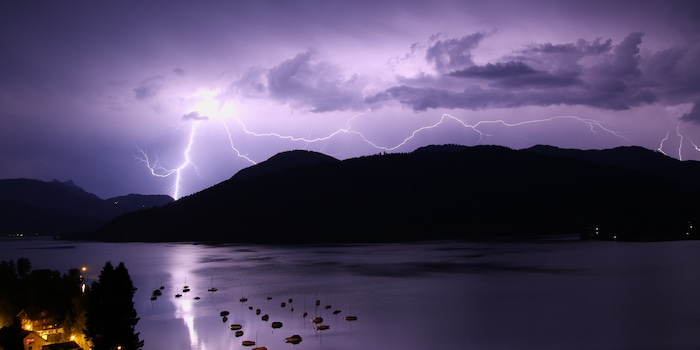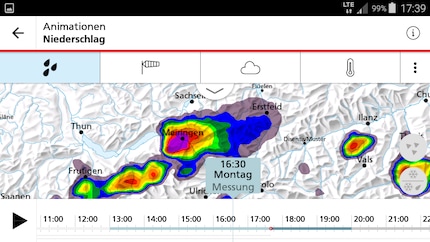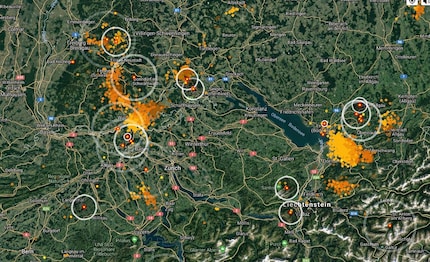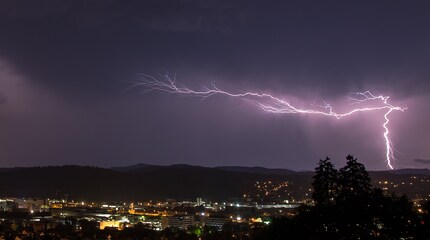

Thunderstruck – how to photograph storms
A storm is brewing. Most people run back to their houses, seek shelter in a low spot or hide under the blankets. Storm photographers do the opposite. They want to catch this wonder of nature. Keep reading to find out how it’s done.
How do you capture spectacular thunderstorms on camera? In terms of recording technique, it isn’t as difficult as you might think. The hardest part is being in the right place at the right time. I’ve put together a handful of tips for you.
I don’t normally give advice without having first-hand experience in the matter. However, when I started writing this post, it hadn’t stormed in weeks. I had my mind set on publishing it in time for the next storm wave so you could head off and capture those lightning bolts. Therefore, I didn’t draw from my own experience but from Andreas Hostettler – a keen storm photographer and meteorologist by profession.
Snapping lightning
Slow shutter speed works best when it’s dark. So it really comes in handy that storms tend to unleash in the evening or at night. With a neutral density (ND) filter, you can also do long exposure shots when it’s still light out. Although lightning is less impressive in daylight, apocalyptic thunderclouds and dramatic landscapes really come into their own.
Preview with defined aperture time
If you have a mirrorless camera, the viewfinder will indicate the brightness resulting from a long exposure time at the current aperture. If it doesn’t, this option has probably been deactivated in the settings. For the Canon M50, for example, this menu item is called «exposure simulation».
More tips on long exposure time
Right place, right time
The biggest challenge when it comes to snapping storms is being in the right place at the right time with all your equipment ready to go.
The weather forecast will give you a rough idea of what to expect in the next two to three days. As the possible moment approaches, you need to take a closer look. Consult a rain radar like the one on the MeteoSchweiz website or better still, the mobile app.
Pick your spot beforehand
That’s why Hostettler does things the other way round. He looks for a good photographing spot first. In his vicinity, this would be the panorama terrace Bäumli in Winterthur, for example. «This place has the advantage that the view is facing southwest, where storms often come from. There is also a view of the city and not just the next building.»
He recommends the website turmfinder.ch to discover suitable lookouts. The site features a map of accessible observation towers in Switzerland.
Safety: watch from the sidelines
Please be safe and remember to stay on the sidelines and not to get caught in the middle of the storm. Lookouts are particularly exposed. Hostettler says: «Certain apps will give off a warning signal if you’re getting too close. Keeping a safe distance of about 15 kilometres also makes photographing easier as the wind and rain aren’t as fierce.» But not always. Some storms as far away as 20 to 30 kilometres are sometimes preceded by wind forces of over 70 km/h.
Hostettler recommends the Gewitter Alarm app for iOS and Android. The app shows both lightning and the radar signal.
According to meteo expert Hostettler, the following is also important: It’s not unusual that new storm cells form in front of a brewing storm front. That’s why it’s important to regularly check the sky for looming cloud formations above your photo location. «You can often hear a kind of mumble when new storm cells are forming. The sound is caused by small discharges in the upper cloud levels and indicates that an electric storm is imminent.»
There’s an old trick to estimate the distance of lightning: Count the seconds between the lightning and that first rumble of thunder. Sound travels at about one kilometre per three seconds. Light at zero seconds. So if ten seconds pass, you’re a bit over three kilometres away from where lightning struck.
So if life is dear to you, don’t try to force anything and, if in doubt, abandon your mission, even if you didn’t get a good photo. «One time, I made it back to the car by the skin of my teeth and saw lightning strike a crane just 100 metres away», Hostettler tells me. A further safety tip: Don’t stray too far from your car – it will protect you if lightning strikes.
Cover photo: Andreas HostettlerMy interest in IT and writing landed me in tech journalism early on (2000). I want to know how we can use technology without being used. Outside of the office, I’m a keen musician who makes up for lacking talent with excessive enthusiasm.
Practical solutions for everyday problems with technology, household hacks and much more.
Show all





